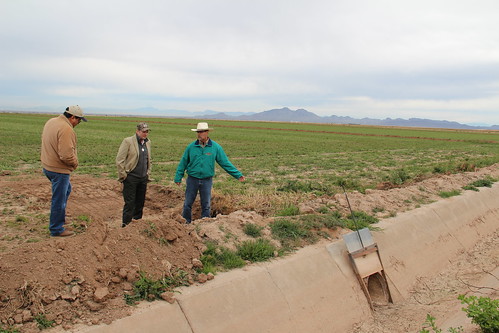
I come from generations of Mississippi River towboat captains and family farmers. From as early as I can remember, our family believed that if you were going to do a job, you’d better do it right, and that no job was either too big or too small.
Hard work was valued, and everyone always looked for new ways of doing jobs better. The river and the land have long supported our family. From time to time, I have an experience that takes me back and today’s trip was one of those times.
Recently, when I was crossing the Colorado River from California into Arizona, I thought about how many times I had crossed the Mississippi River from Illinois to Iowa or Missouri. But crossing this river was very different. Driving into Arizona, there was desert as far as I could see in any direction. This instantly sparked my curiosity.
I thought, “How can people live off this land?” I could not wait to meet with the farmers and ranchers to see how they had adapted to this land.
During my visit, I had the opportunity to meet with three tribal nations, the Colorado River Indian Tribes, the Gila River Indian Community and the San Carlos Apache Tribe, and see how they worked with USDA’s Natural Resources Conservation Service (NRCS) to use water wisely – doing a job better.
While visiting with the Colorado River Indian Tribes, I saw the many irrigation improvements designed and partially funded by NRCS and installed by the Tribes in an effort to conserve water. Conserving water and using just the right amount needed on-time continues to be critical to the success of their operation.
Mile upon mile of inefficient dirt waterways had been replaced by concrete waterways to preserve water. The tribal farming operation grows alfalfa for domestic and international consumption. Cotton was grown, harvested and ginned by the tribe’s members.

The next morning we visited the Gila River Indian Community. The Tribe developed the Agricultural Improvement Program to simplify approval process within the tribe. This program makes it easy for the tribe’s farmers and ranchers who are applying for financial assistance through NRCS’ Environmental Quality Incentives Program (EQIP).
Through NRCS programs, these tribal producers have been able to laser level their fields to improve their irrigation efficiency in an environment where every drop counts. Thousands of acres have been reclaimed from the desert over the years, providing jobs and income while constantly improving the use of precious water.
Later that day, we met with representatives from the San Carlos Apache Tribe to learn about projects funded through a USDA initiative, called StrikeForce for Rural Growth for Opportunity. StrikeForce is a coordinated effort across USDA to increase economic opportunities and address the needs of rural communities experiencing persistent poverty. Currently, StrikeForce teams are working in 20 states.
Dee Randall, a tribal forester with the San Carlos Apache Tribe, explained the Apache ancestral connection to the land and their belief that if the land is healthy then their people are healthy.
It made me think of my cousin farming some of the same land that my great-grandfather farmed, and of my brother working on the Mississippi River just like my father and grandfather. I know how my family values both the health of the river and the land. It made me smile to know that we share these same values and that as assistant chief at the NRCS, just as they do; I work every day to help conserve our natural resources.
I truly appreciate the hard work and passion that these tribal producers have for their lands. It speaks volumes to their character, and I’m proud to be a part of the agency that has helped these hardworking farmers and ranchers, help the land.

